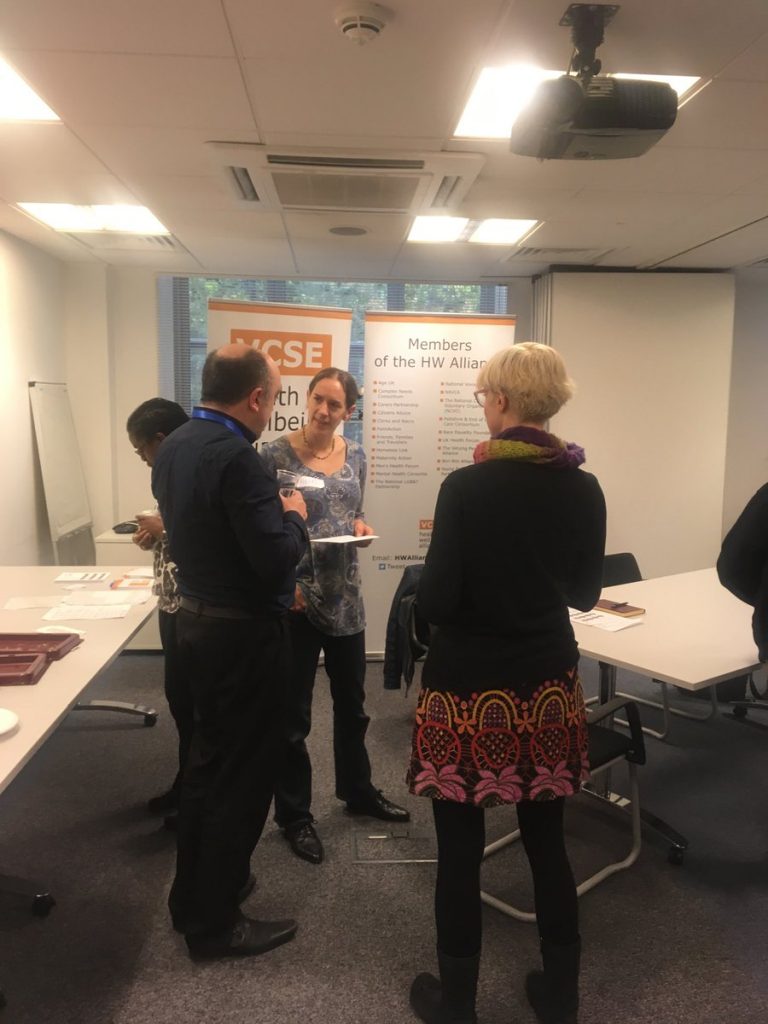Making the audit tool
The Inclusion Health Audit Tool for VCSE organisations was developed by members of the VCSE Health and Wellbeing Alliance, led by Alliance members Friends Families and Travellers and Homeless Link with input and support from the Mental Health Foundation, FaithAction, Clinks, National Voices, the Valuing People Alliance, the National LGB&T Partnership and Win Win Alliance. We would like to thank in particular, Ravi Jaipaul, Health Equity Manager at Public Health England and our project manager for this project for his support, enthusiasm and contribution to this project. We would also like to thank Paul Larkin from Emmanuel Westly and Del Campbell from National Ugly Mugs for their sizeable and insightful contributions throughout the project.
Stage 1
Researchers from the Mental Health Foundation carried out a scoping exercise to identify whether members of the HWAlliance members were working with inclusion health groups, and the ways in which this work is delivered. The aim of this was to reveal gaps in practice, using a quick and easy to access format and to discover to what extent organisations in the voluntary sector are effectively monitoring for equality and diversity, so that we could ensure to build on existing good practice and incorporate intersectionality into the audit tool questions and guidance.

Stage 2
We carried out a series of focused working groups with two distinct groups of people:
- The first group met with the goal of defining what works – this was made up of organisations which were working with inclusion health groups, to learn of good practice models and what these organisations are doing to engage with people with lived experience to address inequalities. This group included experts by experience from the inclusion health groups.
- The second group met with the goal of defining obstacles and barriers – this was made up of people and organisations that were not knowingly working with inclusion health groups, to learn what the barriers and issues are that prevent them from working with these groups.
As part of this stage, experts by experience from inclusion health groups discussed their experiences of different services and organisations during times when they had experienced a health issue. This helped us to identify good practice and things which could be improved, both within the statutory and voluntary sectors.
Stage 3
We met with participants of both groups and worked together to examine the problems and find solutions to create the tool and shape the way in which the tool will be applied. We discussed the sort of questions which should be asked, how they should be worded and how to make the audit tool as inclusive as possible. We agreed that the audit tool should be interactive and make it easier for organisations to access information relevant to them which would help them to improve their practice with inclusion health groups. We agreed that the audit tool should:
- Measuring VCSE organisations’ level of understanding of good practice in inclusion health
- Help to diagnose gaps in understanding or practice
- Deliver tailored information which addresses any gaps in information
- Including a mechanism which scores organisations on their practices and allows high scorers to download an inclusion health kitemark indicating the inclusivity of their organisation
Stage 4
We worked to analyse and synthesise the findings of the working groups and develop the audit tool using those findings. Working with our technical partner Moocow Media, we developed an online audit tool which asks VCSE organisations a series of questions about their work on equality, diversity and on inclusion health and using this information creates a unique and tailored guide which will help VCSE organisations to improve their engagement with inclusion health groups, regardless of what stage of the journey they are at.
We would like to sincerely thank everyone who has been involved at every stage of this project.
